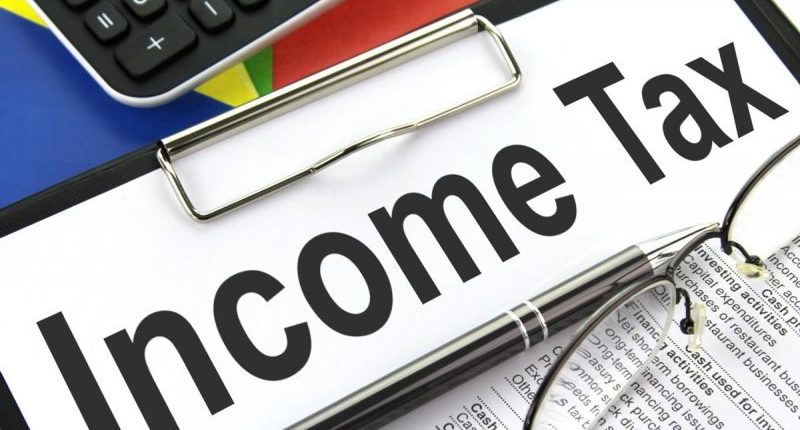The Income Tax Act has provided investment options to save tax and build the habit of savings and investment amongst the taxpayers. Here are five investment options that help you save taxes and also secure your future:
- Equity-linked Savings Scheme (ELSS)
ELSS funds majorly invest in equity and equity-linked securities like listed equity shares of the corporates. They also invest some portion towards fixed income securities.
ELSS schemes are mutual fund schemes eligible for tax deductions under Section 80C within the limit of Rs.1.5 lakh. These schemes have a lock-in period of a minimum of three years, which is the shortest amongst all the 80C tax-saving investments.
Also, you should note that there are no provisions for a premature exit in ELSS. However, ELSS funds are the only tax saving options with the potential to offer inflation-beating returns.
Investing in ELSS provides twin benefits of tax deduction and wealth creation. ELSS funds also offer SIP (Systematic Investment Plan), which helps to stagger the investment over a period of time, thereby giving the benefit of rupee cost averaging and compounding. These funds offer a maximum return if invested for the long term. ELSS is one of the most lucrative and high return tax-saving options.
- National Pension Scheme (NPS)
The National Pension System (NPS) is a pension scheme sponsored by the government. It is open to all citizens aged between 18 to 70 years. Non-resident Indians (NRIs) can also invest in NPS.
Investors in NPS get the twin benefits of pension in retirement and tax deductions. A portion of the NPS investment goes to equities (this may not offer guaranteed returns). However, there is a cap in the range of 50% to 75% on equity exposure for the NPS. The equity portion is reduced by 2.5% each year beginning from when the investor turns 50 years of age.
The lock-in period in the NPS scheme is till retirement. However, one cannot withdraw the entire corpus, even post-retirement. Minimum 40% of the corpus is set aside to receive a regular monthly pension.
There are two different accounts under the NPS called the Tier I and Tier II account.
- Tier I is the retirement account that offers many tax benefits. There are many restrictions on withdrawal in a Tier I account until you attain the age of 60.
- The Tier II account is voluntary, and you can take out the money anytime you want. You can open the NPS Tier II account only if you have a Tier I account by filling out the application form.
Investments in the NPS are deployed under the following broad asset classes:
- Equity – (E) – Invests predominantly in Equity market instruments.
- Corporate debt – (C) – Invests in bonds issued by public sector undertakings, public financial institutions and money market instruments.
- Government Securities – (G) – Invests in securities issued by the central and state governments and money market instruments.
- Alternate Investment Funds – (A) – Invests in Real Estate Investment Trusts (REITs) and Alternate Investment Funds.
The NPS offers two investment choices called the active choice and the auto choice. Active choice allows investors to decide how much money should be invested in different asset classes of E, C, G, and A subject to a max of 75% in equity. At the same time, auto choice allows the investor to invest money in different asset classes of E, C, G and A depending on the subscriber’s age.
The returns offered by the scheme are much higher than other traditional tax-saving investments like the PPF.
NPS investments qualify for deduction under section 80CCD(1), 80CCD (2), and 80CCD (1B).
Under Section 80CCD (1) maximum deduction allowed is 10% (20% of gross income in case of the self-employed taxpayer) of the salary, within the overall limit of Rs.1.5 lakh.
Section 80CCD(2) allows a deduction for the employer’s NPS contribution, which will not form a part of Section 80C.
Further, Finance Act 2020 had imposed a limit of Rs.7.5 lakh for the employer’s contribution towards NPS, PF and superannuation fund. Amount exceeding this would be taxable in the hands of the employee as perquisites.
The maximum amount allowed for deduction under 80CCD (1B) will be the lowest of the below:
- Actual NPS contribution by employer
- 10% of Basic + DA
- Gross total income
Section 80CCD (1B) allows you to claim a deduction of Rs.50,000 (over and above Rs.1.5 lakh limit under the umbrella limit of section 80C) for self contribution.
The investor can avail of a total deduction of up to Rs.2 lakh in this scheme.
- Sukanya Smriddhi Yojana (SSY)
Parents (or legal guardians) of a girl child aged less than 10 years can open the account under this scheme. The resident girl child will be the beneficiary of the account from the time of the opening of the account till the time of maturity/closure.
The parent (or legal guardian) may deposit the amount and can operate the SSY account. After the girl attains 18 years of age, the account has to be mandatorily operated by her.
A parent (or legal guardian) can open this account for a maximum of two girl children (including adopted children).
Investments made in the SSY scheme are eligible for deductions under Section 80C, subject to a maximum cap of Rs.1.5 lakh. The interest that accrues against this account which gets compounded annually is also exempt from tax. The proceeds received upon maturity/withdrawal are also exempt from income tax.
- Unit Linked Insurance Plan (ULIP)
A ULIP scheme is a combination of both insurance plus an investment scheme. The policy covers the death benefit (in case of the policy holder’s death) plus a fixed return benefit after the policy term. Some part of the premium goes towards life insurance under this scheme, whereas some will be towards investment in equity and/or debt.
The policy-holder has an option to choose between various funds and asset classes. The investments made are subject to the market risk borne by the investor like any other market investment. Thus the policyholder should make a choice of the funds and asset class after evaluating the risk appetite.
The investment in the ULIP scheme qualifies for deduction under Section 80C up to Rs.1.5 lakh. Also, the investor can withdraw funds only after the lock-in of 5 years.
However, it is advisable to have a term insurance cover that is comparatively cost-effective than the death cover offered by these schemes. For investment, ELSS funds offer better returns with a shorter lock-in than ULIP plans. Hence, a combination of term life insurance and ELSS can give you the benefit of the ULIP plans.
- Five years tax-saving FDs
Five-year tax-saving FD is one of the most hassle tax-saving investments. Deposit in tax saving FD can be made online if the investor has a know-your-customer (KYC) compliant bank account and internet banking facility. While creating the tax saving FD online, one should ensure that the auto-renewal option is disabled or else the tax-saving FD will auto-renew on the day of the maturity for the next five years. This is because premature withdrawal is not allowed in the case of a tax-saving FD.
Banks offer two kinds of interest payment options (i) cumulative (ii) non-cumulative. The interest earned through both options is taxable and added to the total income of the investor.
However, it is to be noted that the interest rates offered by the FD’s are not sufficient to beat inflation and create wealth in the long term. Also, for individuals falling under the highest tax bracket of 30%, the post-tax return could offer meagre actual returns.
Here is a comparative analysis of returns and lock-in of all of these investments
| Investment | Returns* | Lock-in Period |
| ELSS Funds | 10% to 12% | 3 years |
| National Pension System (NPS) | 10% to 12% | Till Retirement |
| Sukanya Samriddhi Yojana (SSY) | 7.60% | Till the girl reaches a specified age |
| Unit Linked Insurance Plan (ULIP) | Varies with Plan Chosen | 5 years |
| 5-Year Bank Fixed Deposit | 5.5% to 6.50% | 5 years |
*These returns are subject to changes from time to time according to government regulation
For any clarifications/feedback on the topic, please contact the writer at jyoti.arora@cleartax.in

I am a Chartered Accountant by profession with 4+ years of experience in the finance domain. I consider myself as someone who yearns to explore the world through travelling & Reading. I believe, the knowledge & wisdom that reading gives has helped me shape my perspective towards life, career and relationships. I enjoy meeting new people & learning about their lives & backgrounds. My mantra is to find inspiration from everyday life & thrive to be better each day.





